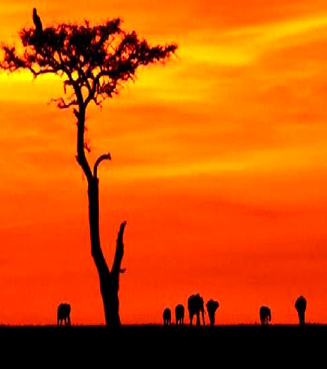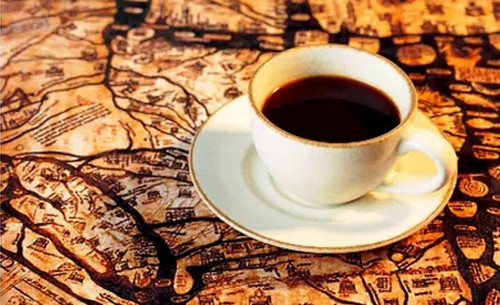Introduction to the characteristics of flavor and taste varieties in Brazilian coffee manor with unique advantages
On April 22, 1500, the Portugal navigator Pedro Cabral arrived in Brazil. He named the land Holy Cross and claimed it for Portugal. Since the Portuguese colonists began plundering the Brazilian redwood, the word "redwood"(Brasil) gradually replaced "Holy Cross" and became the name of Brazil, which is still in use today. Its Chinese transliteration is "Brazil."
In the 1630s Portuguese expeditions were sent to establish colonies in Pakistan. The governor was appointed in 1549. Later, the whole colony was unified along the Atlantic coast under Portugal rule. The French invaded in 1555 and occupied what is now Rio de Janeiro, intending to establish a French colonial stronghold in South America. However, since the French were unable to attract colonists from Europe, they were finally expelled from Rio by the Portugal in 1565. Two years later, the Portugal founded Rio. Portugal sovereignty over Brazil was not challenged again until 1630.
Napoleon invaded Portugal in 1807 and the Portuguese royal family moved to Brazil. In 1820, the Portuguese royal family moved back to Lisbon, and Prince Pedro remained as regent. On September 7, 1822, it declared complete independence from Portugal and established the Brazilian Empire. He was crowned emperor and called Pedro I. In 1824 Brazil promulgated the Constitution. In 1825, Portugal recognized Brazilian independence.
During the imperial period (1822~1889), after the establishment of the Brazilian Empire, the Braganza Dynasty system and Portugal aristocratic power remained intact, the large manor system and slavery still existed, and Brazil was economically and politically dependent on Britain. Pedro I ruled despotically, forcibly dissolving Parliament in 1823 and then suppressing republican revolts in the northeastern provinces of Pernambuco by force
Brazil, like Argentina and Chile in South America, is a rapidly developing country with the title of "BRIC", and its economic development speed surprises the world. Its industrial and agricultural development affects the development of the world economy to a certain extent. As one of the world's major producers and suppliers of raw materials, Brazil has unique advantages over Southeast Asia, Central Asia and Central Africa. Below, let's learn more about Brazil's most distinctive agricultural development from the current situation and development of Brazil's coffee industry. First of all, it is necessary to understand the unique natural geographical conditions for the production of coffee beans in Brazil from the natural environment of Brazil. Brazil is located at latitude 15°45 south and longitude 47°57 west, with tropical climate in most areas and subtropical climate in parts of the south. The average annual temperature in the Amazon Plain is 25 - 28 degrees Celsius, and the average annual temperature in the southern region is 16 - 19 degrees Celsius. The southeast of Brazil is the main producer of coffee. Brazil's terrain is mainly divided into two parts, one part is the Brazilian plateau above 500 meters above sea level, distributed in the south of Brazil, and the other part is the plain below 200 meters above sea level, mainly distributed in the Amazon River Basin in the north and the west. The terrain is divided into Amazon Plain, Paraguay Basin, Brazilian Plateau and Guyana Plateau, among which Amazon Plain accounts for about 1/3 of the country's area. There are three major river systems: Amazon, Parana and San Francisco. Amazon River is 6751 kilometers long, traversing northwest Brazil, covering an area of 3.9 million square kilometers in Brazil; Parana River system includes Parana River and Paraguay River, flowing through southwest, with many rapids and waterfalls, rich in hydraulic resources; San Francisco River system is 2900 kilometers long, flowing through arid northeast, and is the main irrigation water source in the region. The coastline is more than 7400 kilometers long and the territorial sea is 12 nautical miles wide.
tob_id_2536
The territorial exclusive economic zone is 188 nautical miles. Among them, the Amazon Plain is the largest plain in the world, the Amazon River is the largest river in the world, and the Brazilian Plateau is the largest plateau in the world. Sao Paulo is the largest city in the southern hemisphere.

Important Notice :
前街咖啡 FrontStreet Coffee has moved to new addredd:
FrontStreet Coffee Address: 315,Donghua East Road,GuangZhou
Tel:020 38364473
- Prev

Taste characteristics of Mexican coffee varieties with moderate sour taste and elegant taste introduction to the flavor of fine coffee and beans in the manor
The main producing areas are: Kolabegu, Australia Aluca states, the products are mostly washed beans produced in the highlands, with good aroma and sour taste, the grade is divided into three categories according to altitude: Aldura (219m-1280 m), Prima. Rabe Society (853-1006 m) Puine. Raba Society (640-762 m). Coffee beans are mainly exported to the United States: Aldura, Mexico. Mouth
- Next

Distinctive personality sun Yega Shifeiwaka varieties taste characteristics Manor boutique coffee bean flavor introduction
The bean comes from a single farm, Ethiopia, and is processed by the Waka Cooperative (Worka cooperative). Alemayehu Alako Farm is a member of the Waka Cooperative. The Waka Cooperative, located in the south of Gedeb District, was founded in 2005 and joined the famous Yejia Sheffield Coffee Farmers Cooperative Union (YCFCU,Yirgacheffe Coffee Farmers Cooperati).
Related
- Detailed explanation of Jadeite planting Land in Panamanian Jadeite Manor introduction to the grading system of Jadeite competitive bidding, Red bid, Green bid and Rose Summer
- Story of Coffee planting in Brenka region of Costa Rica Stonehenge Manor anaerobic heavy honey treatment of flavor mouth
- What's on the barrel of Blue Mountain Coffee beans?
- Can American coffee also pull flowers? How to use hot American style to pull out a good-looking pattern?
- Can you make a cold extract with coffee beans? What is the right proportion for cold-extracted coffee formula?
- Indonesian PWN Gold Mandrine Coffee Origin Features Flavor How to Chong? Mandolin coffee is American.
- A brief introduction to the flavor characteristics of Brazilian yellow bourbon coffee beans
- What is the effect of different water quality on the flavor of cold-extracted coffee? What kind of water is best for brewing coffee?
- Why do you think of Rose Summer whenever you mention Panamanian coffee?
- Introduction to the characteristics of authentic blue mountain coffee bean producing areas? What is the CIB Coffee Authority in Jamaica?

